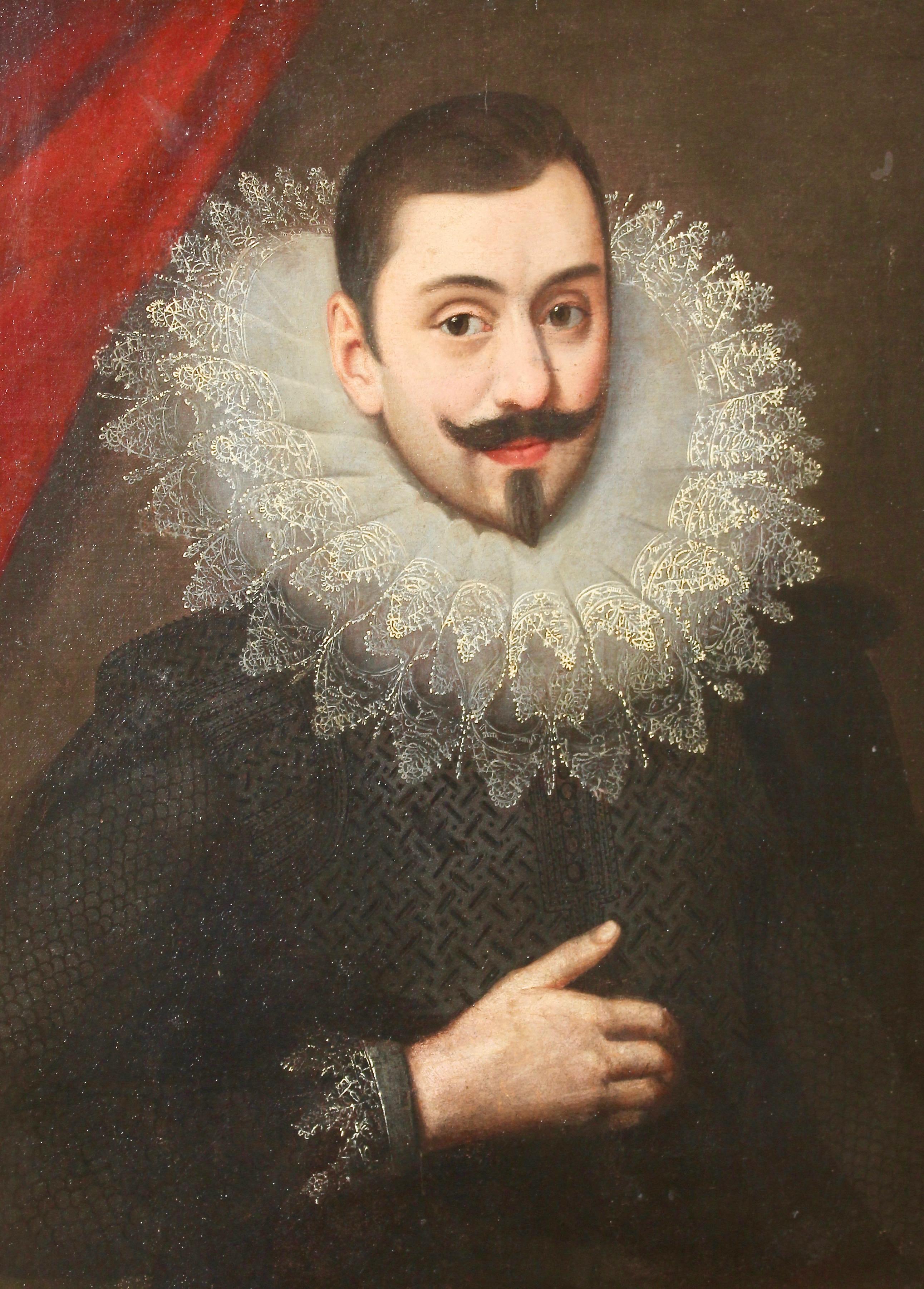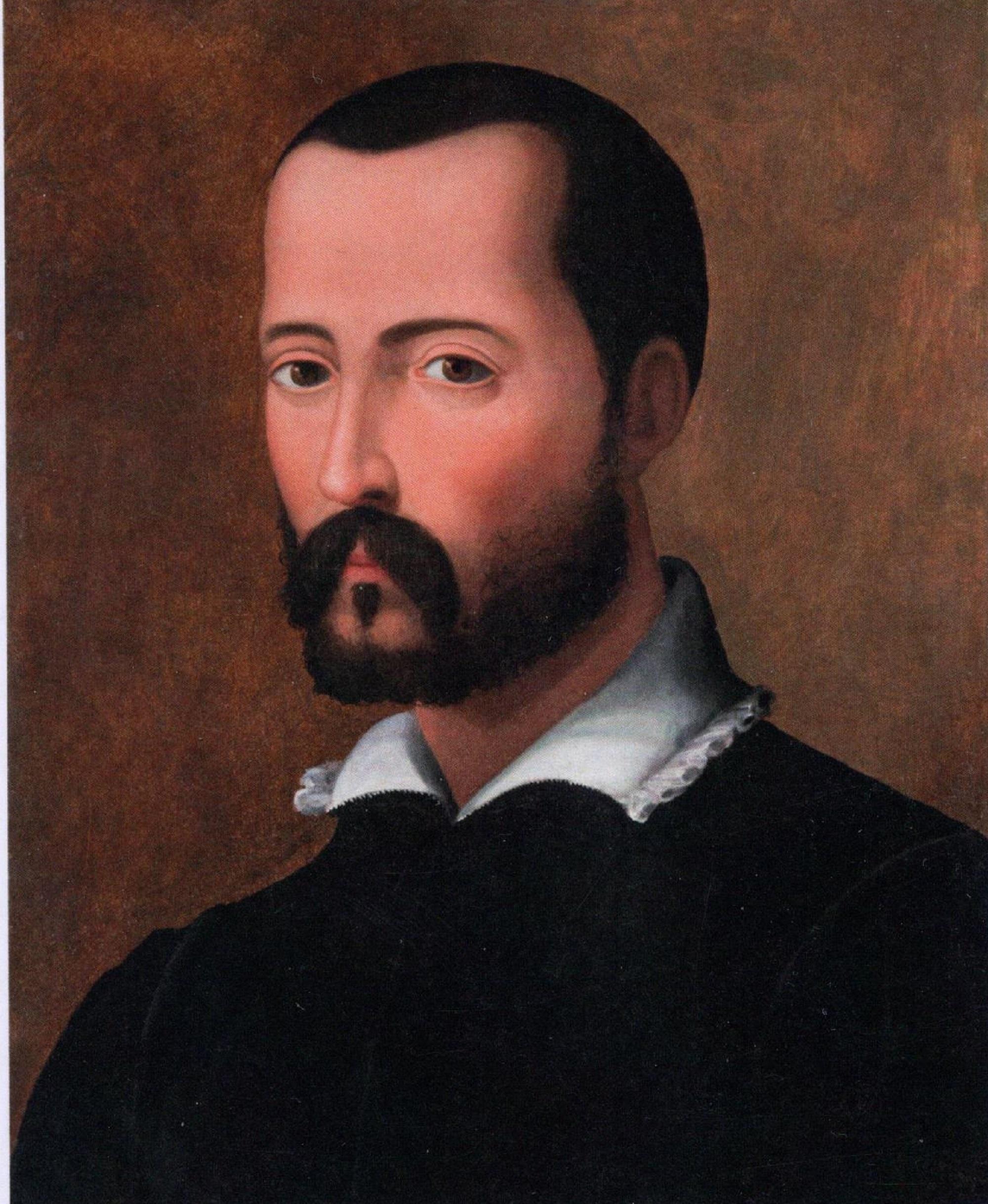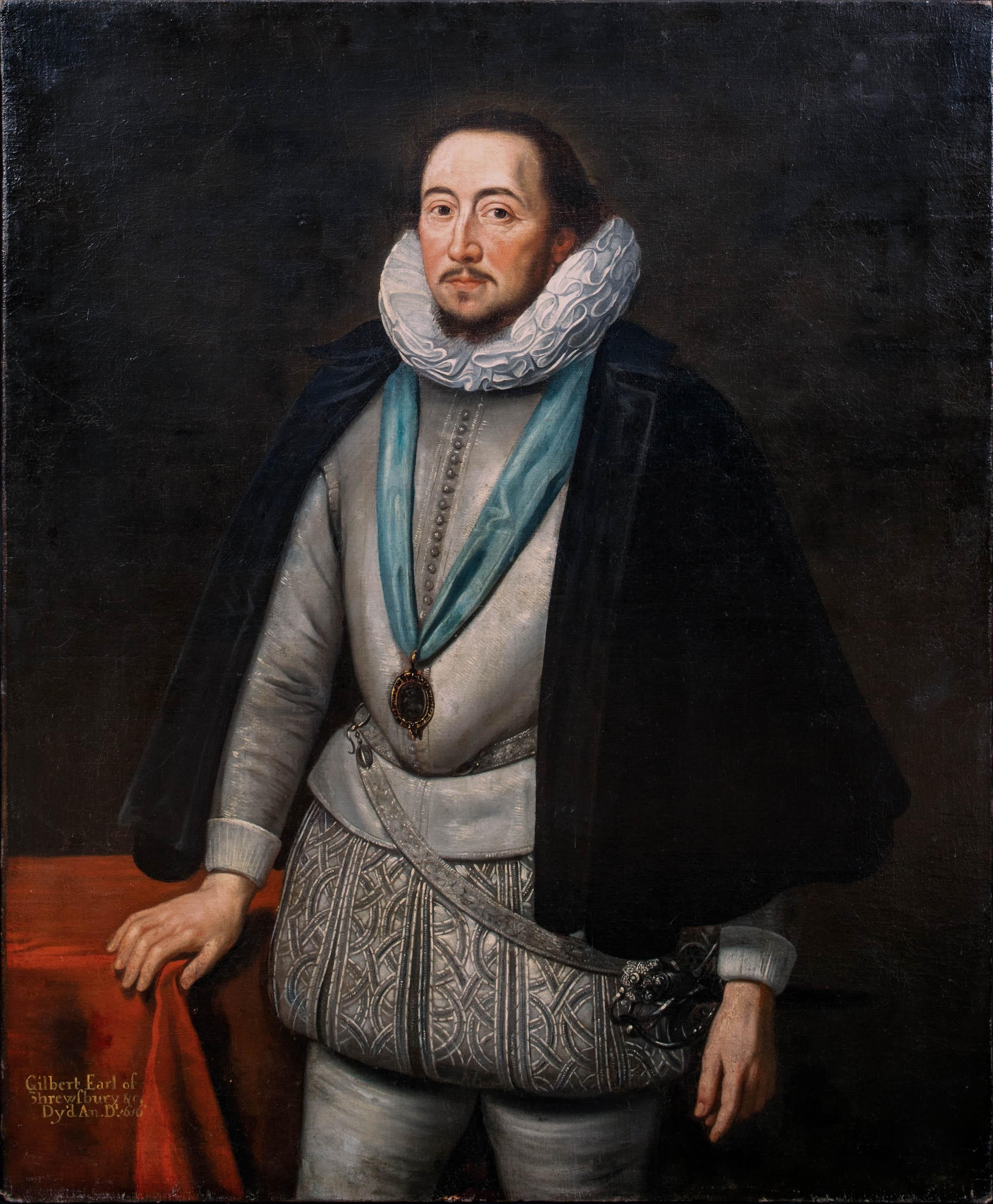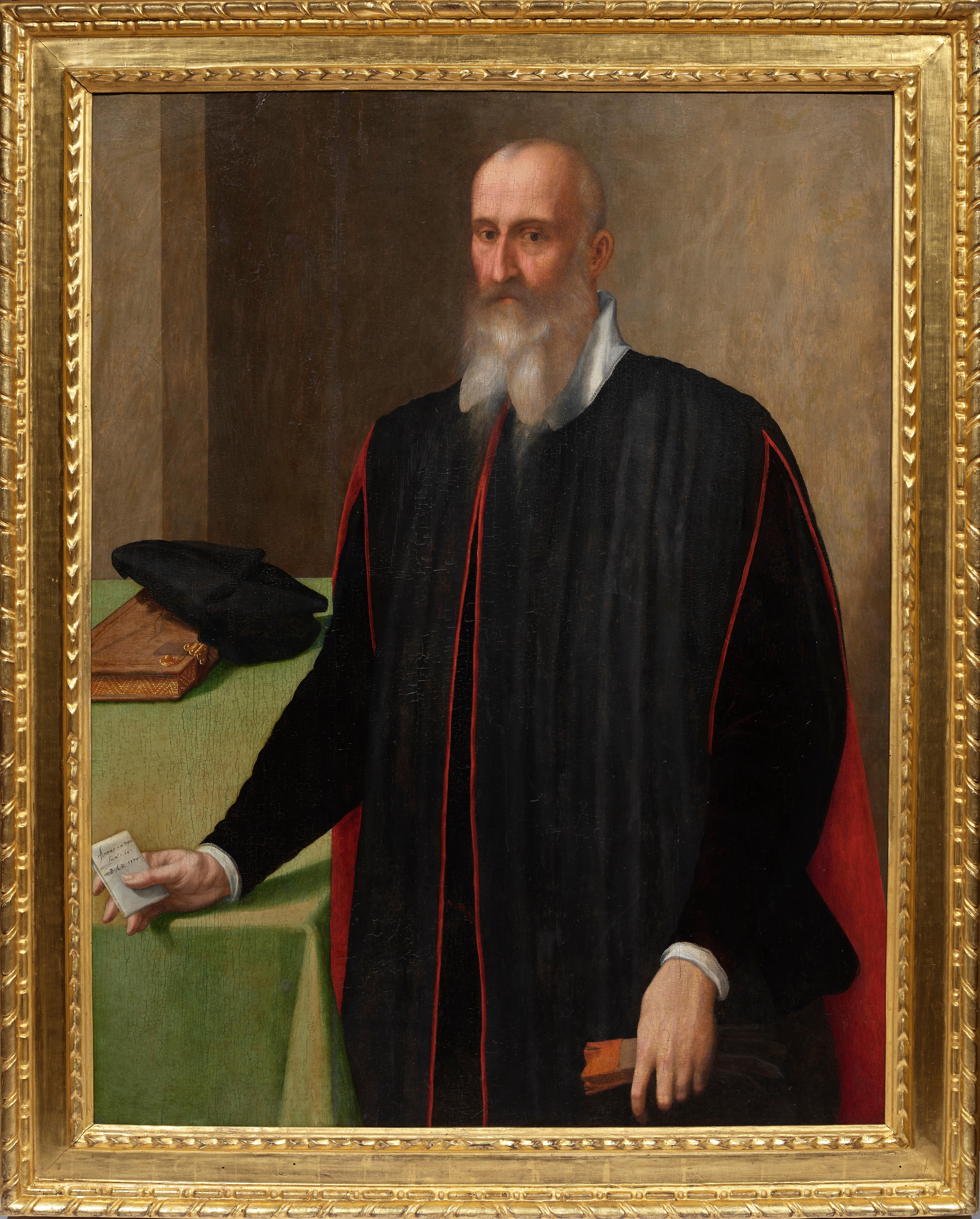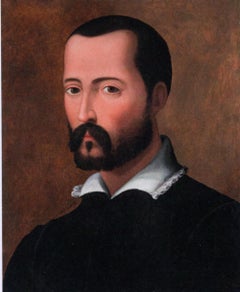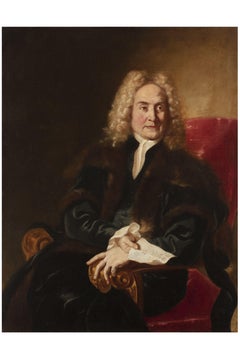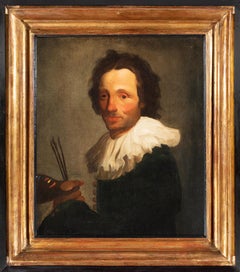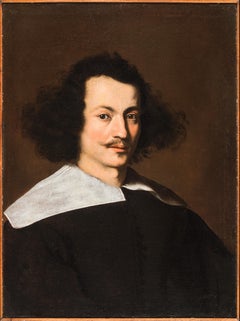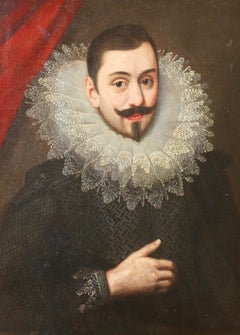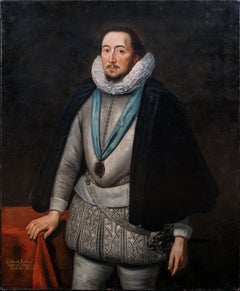Items Similar to Early 17th Century by Tiberio Titi Portrait of a Gentleman Oil on panel
Want more images or videos?
Request additional images or videos from the seller
1 of 12
Tiberio TitiEarly 17th Century by Tiberio Titi Portrait of a Gentleman Oil on panelEarly 17th Century
Early 17th Century
$84,313.39
$105,391.7420% Off
£63,148.03
£78,935.0420% Off
€71,120
€88,90020% Off
CA$118,347.34
CA$147,934.1720% Off
A$129,458.58
A$161,823.2220% Off
CHF 67,449.62
CHF 84,312.0220% Off
MX$1,557,677.45
MX$1,947,096.8220% Off
NOK 854,159.59
NOK 1,067,699.4920% Off
SEK 801,973.98
SEK 1,002,467.4820% Off
DKK 541,713.80
DKK 677,142.2520% Off
About the Item
Tiberio Titi (Florence, Italy, 1573 – 1638)
Title: Portrait of a Gentleman
Medium: Oil on panel
Dimensions: Without frame 122 x 91 cm – with frame 162 x 133 x 10 cm
Publications: Giorgio Baratti Collezione. Selezione di opere d’arte antica (Giorgio Baratti Collection. Selection of ancient works of art), curated by Professor Giancarlo Sestieri and with the participation of Professor Andrea Emiliani, Grafiche Veneziane, Venice 2011, pp. 18-19.
Tiberio Titi (1573-1638) was an Italian painter specialised in portrait painting, including small pencil paintings. He was the second son of painter and architect Santi di Tito (1536-1603), who trained his son until his death. His activity took place entirely within his father's workshop. This courtly Portrait of a Gentleman shows an elegantly clad man dressed in a black striped vest and a wide pleated collar. He is immortalised standing straight up with most of his body visible. He has a book in his right hand while his left hand is on a table on which there is an hourglass and another book. Although the pose seems casual, it was actually carefully composed for this official portrait and it is in line with the canons of the Florentine school of the late 1500s. It was a style not only encouraged by the Medici family but also by many members of the Florentine aristocracy.
- Creator:Tiberio Titi (1573 - 1638, Italian)
- Creation Year:Early 17th Century
- Dimensions:Height: 48.04 in (122 cm)Width: 35.83 in (91 cm)
- More Editions & Sizes:Without frame 122 x 91 cm – with frame 162 x 133 x 10 cmPrice: $105,392
- Medium:
- Movement & Style:
- Period:Early 17th Century
- Condition:
- Gallery Location:Milano, IT
- Reference Number:1stDibs: LU1701215951932
About the Seller
5.0
Vetted Professional Seller
Every seller passes strict standards for authenticity and reliability
Established in 1964
1stDibs seller since 2021
- ShippingRetrieving quote...Shipping from: Milano, Italy
- Return Policy
Authenticity Guarantee
In the unlikely event there’s an issue with an item’s authenticity, contact us within 1 year for a full refund. DetailsMoney-Back Guarantee
If your item is not as described, is damaged in transit, or does not arrive, contact us within 7 days for a full refund. Details24-Hour Cancellation
You have a 24-hour grace period in which to reconsider your purchase, with no questions asked.Vetted Professional Sellers
Our world-class sellers must adhere to strict standards for service and quality, maintaining the integrity of our listings.Price-Match Guarantee
If you find that a seller listed the same item for a lower price elsewhere, we’ll match it.Trusted Global Delivery
Our best-in-class carrier network provides specialized shipping options worldwide, including custom delivery.More From This Seller
View All16th Century by Giovanni Maria Butteri Portrait of Francesco I Oil on Panel
Located in Milano, Lombardia
Giovanni Maria Butteri (Florence, Italy, 1540 - 1606)
Title: Portrait of Francesco I
Medium: Oil on panel
Dimensions: without frame cm. 47.7 x 39 - with frame cm. 55.2 x 46.5
Expertise by Carlo Falciani, art historian
Fairs: The International Biennial of Antiques in Florence 2024 (BIAF, Biennale Internazionale dell’Antiquariato di Firenze)
Publications: From Sacro to Profano, the Giorgio Baratti art collection from Milan, exhibition catalogue curated by Daiva Mitrulevičiūtė, Giovanni Matteo Guidetti and Ileana Maniscalco, (16 February – 27 September 2020), Vilnius, National Museum - Palace of the Grand Dukes of Lithuania, pp. 566-569.
This valuable portrait, by the painter Giovanni Maria Butteri, an exponent of Mannerism and active mainly in Florence, portrays Francesco I de' Medici (1541 - 1587) eldest son of the Grand Duke of Tuscany...
Category
16th Century Old Masters Portrait Paintings
Materials
Panel, Oil
17th-18th Century By Niccolò Cassana Portrait of a Gentleman Oil on Canvas
Located in Milano, Lombardia
Niccolò Cassana (Venice, Italy, 1659 - London, UK, 1714)
Title: Portrait of a Gentleman
Medium: Oil on canvas
Dimensions: without frame 119.5 x 92.5 cm
Painting without frame.
Expe...
Category
17th Century Old Masters Portrait Paintings
Materials
Oil, Canvas
17th Century By Niccolo' Cassana Self-portrait Oil On Canvas
Located in Milano, Lombardia
Niccolò Cassana (Venice, Italy, 1659 - London, UK, 1713)
Title: Self-portrait
Medium: Oil on canvas
Dimensions: without frame 64 x 54 cm - with frame 89 x 78 cm
Antique shaped wooden cassetta frame...
Category
Late 17th Century Italian School Portrait Paintings
Materials
Cotton Canvas, Canvas, Oil
$8,180 Sale Price
20% Off
17th Century by Bernardo Strozzi Portrait of a man with white collar
By Bernardo Strozzi
Located in Milano, Lombardia
Bernardo Strozzi, also known as “Il Cappuccino” and “il Prete Genovese”, (Genoa, Italy, 1581 – Venice, Italy, 1644)
Title: Portrait of a man with white collar
Medium: Oil on canvas
D...
Category
17th Century Old Masters Portrait Paintings
Materials
Canvas, Oil
$63,258 Sale Price
20% Off
19th Century By Comte d'Houdetot Portrait of GiovanniAntonioFilippini Oil/canvas
Located in Milano, Lombardia
Frédéric-Christophe, Comte d'Houdetot (Paris, France, 1778 - 1859)
Title: Portrait of Giovanni Antonio Filippini
Medium: Oil on canvas
Dimensions: without frame 72.50 x 42 cm - with ...
Category
19th Century Old Masters Portrait Paintings
Materials
Canvas, Oil
17th century By Neapolitan Maestro San Vincenzo Ferreri Oil on canvas
Located in Milano, Lombardia
17th Century Neapolitan Maestro
Title: San Vincenzo Ferreri
Medium: Oil on canvas
Dimensions: without frame 63 x 48.5 cm - with frame 77 x 63.5 cm
Original shaped, carved, sculpted a...
Category
17th Century Old Masters Portrait Paintings
Materials
Canvas, Oil
You May Also Like
Portrait Noble Man Ceresa Paint Oil on canvas Old master 17th Century Italy Art
Located in Riva del Garda, IT
Carlo Ceresa (San Giovanni Bianco 1609 - Bergamo 1679) attributable
Full-length portrait of Giacomo Pesenti
Oil on canvas (206 x 121 cm - in frame 212 x 133 cm.)
This fascinating portrait, portraying a full-length gentleman and datable to the 17th century, illustrates the stylistic and compositional details typical of the pictorial production of the Lombardy area, Bergamo in particular. This reference is reflected in elements such as the natural light, the sober and austere setting and, above all, the subtle psychological characterisation of the face.
We are inclined to identify the hand of portrait painter Carlo Ceresa, one of the most illustrious Bergamasque figure painters of the 17th century, capable of developing a style of intense realism and acute psychological investigation. In his works, and our portrait perfectly reflects his canons, an extraordinary naturalistic imprint, great realism and remarkable essentiality are evident.
Those traits of severity, moral rigour and austerity typical of his portraiture find a perfect balance here: never courtly or rhetorical, his portraits are profoundly linked to the concept of counter-reform. Immortalising the main personalities of the time, he established himself as a point of reference for the Bergamasque aristocracy, from the Vertova to the Pesenti to the Secco Suardo.
The subject of the portrait is Giacomo Pesenti, here immortalised life-size in a rigorous black suit, his left hand resting on a table, on which is placed the necessities for writing and a manuscript, and his right hand, with a sealed ring on his little finger, abandoned along his side while he holds his gloves.
He wears a suit of incredible rigour, dressed as befits a man of his high social standing, while the sharp light focuses on his face, with an intensity that seems to be accentuated by the reflection of the white collar, with its sharp profile.
For Ceresa, it is not the richness of the garment that gives value to the person portrayed, it is the need to give feeling and bring out the character of the person, and this he succeeds in marvellously, aided by his ability to capture the essence of the person and return it to us in painting through the face and light used as a strong expressive element.
In fact, the image highlights that 'counter-reformed' composure typical of the portraiture of painters active in this area and era, adhering to a verism...
Category
17th Century Old Masters Paintings
Materials
Oil
$12,139 Sale Price
20% Off
Antique Flemish Baroque painting, 17th Century Portrait "Medici" Oil on canvas.
By Justus Sustermans
Located in Berlin, DE
Antique Flemish Baroque painting, 17th century, portrait, Medici. Oil on canvas.
The painting is probably attributed to the Flemish painter Justus Sustermns.
Pictured is most likel...
Category
17th Century Baroque Portrait Paintings
Materials
Canvas, Oil
$21,339 Sale Price
25% Off
Free Shipping
Portrait Man Pourbus 16/17th Century Paint Oil on canvas Old master Flemish
Located in Riva del Garda, IT
Frans Pourbus (Bruges, 1545 - Antwerp, 1581) circle
Portrait of a gentleman in Renaissance dress with a black doublet and ruff
Late 16th century
Oil on canvas
46 x 32 cm. - 65 x 53...
Category
16th Century Old Masters Paintings
Materials
Oil
$6,041 Sale Price
20% Off
Portrait Of Gilbert Talbot 7th Earl of Shrewsbury (1552-1616), 16th Century
Located in Blackwater, GB
Portrait Of Gilbert Talbot 7th Earl of Shrewsbury (1552-1616), 16th Century
Circle of George Gower (c.1540–1596)
Huge 16th Century Portrait Of Gil...
Category
18th Century Portrait Paintings
Materials
Canvas, Oil
$16,342 Sale Price
20% Off
Portrait of Senator Bartolomeo Panciatichi by Santi di Tito (1574)
Located in PARIS, FR
This recently rediscovered portrait of Santi di Tito depicts a Florentine senator, with a letter in his hand indicating that the painting was executed in 1574 when the sitter was 66 years old. On the basis of these clues, it is tempting to view it as a portrait of Bartolomeo Panciatichi, who was painted some thirty years before by Bronzino (1503 - 1572). While the treatment of the hands recalls the Florentine tradition of Mannerist portraits, the comparison with Bronzino's portrait illustrates Santi di Tito's search for greater realism, despite the stereotyped composition.
1. Santi di Tito, Counter-Reformation painter and portraitist
Santi di Tito was the great painter of the Florentine Counter-Reformation. He proposed a new artistic language that broke away from Mannerism.
Little is known about his training in Florence (perhaps alongside Bronzino or Baccio Bandinelli), but this period of training enabled him to join the Company of Saint Luke, the guild of Florentine painters, in 1554. Between 1560 and 1564, Santi di Tito spent time in Rome, where he frequented the workshop of Taddeo Zuccari. This stay had a fundamental influence on his work, thanks to the discovery of the late work of Raphael, but also his encounters with the painters Francesco Salviati and Federico Barocci.
Around 1565, Santi di Tito returned to Florence, where he remained until the end of his life, dividing his talents between the creation of important religious paintings and countless portraits. He became one of the city's leading painters, distinguishing himself, in particular, in the creation of large religious compositions in which the spirit of the Counter-Reformation was reflected.
In 1568, Santi di Tito became a member of the Confraternity of Saint Thomas Aquinas...
Category
16th Century Old Masters Portrait Paintings
Materials
Poplar, Oil
Portrait of Gentleman from Della Ruota Family, Lombardy, Dated 1624
Located in Bruxelles, BE
Portrait of a Gentleman from Della Ruota family
Lombardy, dated 1624
Oil on canvas
Measures: 105 x 81 cm (without the frame)
The coat of arms at the top left of the portrait identifies the effigy as an aristocrat belonging to the Lombard family Della Ruota, represented at the age of 61 in 1624.
The presence of vanity at the bottom right is a clear reference to the passage of time, to the aging and dying body...
Category
Antique 17th Century Italian Renaissance Paintings
Materials
Canvas
More Ways To Browse
Antique Vest
Antique Canon
Antique Canons
Antique 1500s
Antique Hourglass
Vittorio Corcos
Vittorio Matteo Corcos
William Price
1550 Paintings
19th C English Miniature Painting
1920s Painting Portrait Woman
Beatles Oil Painting
Bret Reilly
British Officer Painting
Caspar Netscher
Charles Andre Van Loo
Duke Of Somerset
Edward Masters Painting
